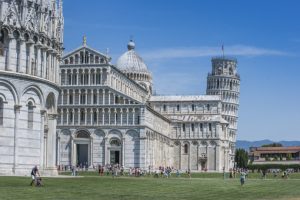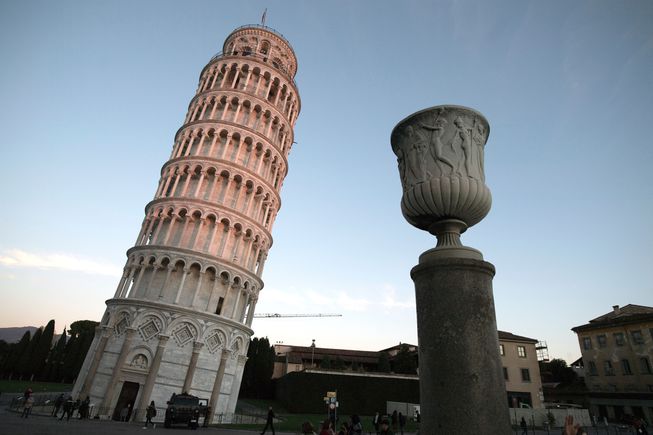Dating back to the 12th century, the Leaning Tower of Pisa is a brilliant specimen of the Romanesque architecture of medieval Italy, says Ruchira, as she takes us on a tour of the ancient wonder. A Different Truths exclusive.
 I had first read about the architectural marvel in my school general knowledge book, wherein it was ranked among the seven wonders of the ancient world. Next, it appeared in our history books when were being taught basic European history. Yes, it is the legendary Leaning Tower of Pisa that I am talking about. However, I had never imagined I would behold this wonder with my eyes.
I had first read about the architectural marvel in my school general knowledge book, wherein it was ranked among the seven wonders of the ancient world. Next, it appeared in our history books when were being taught basic European history. Yes, it is the legendary Leaning Tower of Pisa that I am talking about. However, I had never imagined I would behold this wonder with my eyes.
It did finally happen. When I was in my twenties, I found myself booked on a tour of Italy. And the itinerary included Pisa! On a sparkling autumn morning, I stood before the edifice. Our group arrived here after a short drive from Florence where we had stayed the night before.
Dating back to the 12th century, the tower is a brilliant specimen of the Romanesque architecture of medieval Italy. Known by various names e.g., Torre pendente di Pisa or Torre di Pisa, it is a campanile(tower with multiple bells) located in the vicinity of the town’s cathedral, bang on the Piazza del Duomo(Cathedral Square) where all the religious buildings are situated.
Legends say, it was a swinging chandelier within this very cathedral that inspired the genius, Galileo Galilee to invent the pendulum clock!
I would like to mention here that Pisa happens to be the native place of the renowned scholar, Galileo Galilee. Legends say it was a swinging chandelier within this very cathedral that inspired the genius to invent the pendulum clock!
The construction of the tower dates to that era when the principality/state of Pisa had reached the pinnacle of glory, power, and prosperity. Unfortunately, when the construction had barely reached the 3rd story the tower began to tilt on its south side. This aberration was ascribed to inadequate construction and unusually soft ground it that area. The architects and workers went into damage control mode: they triedcounterweighing the north side and slightly increase the height of the south walls. But all in vain. Consequently, the construction came to a screeching halt.
Nearly a century later, construction work was resumed. This time around, in a bid to counteract the tilt, the angling of the upper stories was much more towards the vertical. Sadly the tilt continued to increase almost up to the 14th century when the construction came to an end. However, in the 20th & 21st centuries efforts were undertaken on a war footing, which resulted in the tilt getting partially corrected, and the tower
The bell tower is fitted with seven bells symbolising the seven notes of the musical scale!
Back to the basics: this spectacular 8-storey tower, built with a blend of marble  and limestone, was originally approximately 60 metres high. More than 250 steps (the actual number is debatable!) comprise the stairway which winds from the ground up to the apex. Interesting to note, the bell tower is fitted withseven bells symbolising the seven notes of the musical scale!
and limestone, was originally approximately 60 metres high. More than 250 steps (the actual number is debatable!) comprise the stairway which winds from the ground up to the apex. Interesting to note, the bell tower is fitted withseven bells symbolising the seven notes of the musical scale!
So, there I gazed in wonder, open-mouthed, at the towering structure, which glistened in the sunlight; the sheen of its surface had not tarnished in the least, with the passage of centuries. I could almost visualise how the architects, engineers and workmen must have toiled hard, day in and day out until the tower was completed. Highly commendable, because the mammoth task was accomplished – utterly devoid of technology and mechanisation! Again, I deeply regretted not getting a camera that would allow me to capture these precious moments and freeze them for posterity.
Nonetheless, this one-of-a-kind experience aptly reminded of Wordsworth’s oft-quoted lines:
“I gazed & gazed but little thought,
What wealth the show to me had brought.”
©Ruchira Adhikari Ghosh
Photos from the Internet







 By
By
 By
By
 By
By